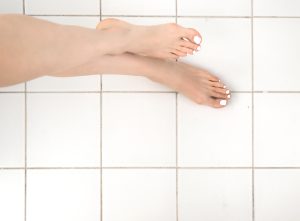Let’s be honest – replacing commercial flooring is about as much fun as a root canal, only considerably more expensive and disruptive. It’s no wonder most business owners I chat with would rather put it off for as long as humanly possible. The good news? With proper maintenance, you can extend the life of your commercial floors by years – sometimes even decades – saving yourself a small fortune in the process.
Having seen businesses make both brilliant and catastrophic decisions with their floor maintenance over the years, I thought I’d share some hard-earned wisdom on keeping those floors looking smart without breaking the bank.
Different Floors, Different Rules
First things first – all floors are not created equal when it comes to maintenance. Let’s break down what each common commercial flooring type needs to live its best life:
Vinyl and LVT: The Low-Maintenance Legends
Luxury vinyl is popular in commercial spaces for good reason – it’s pretty close to bulletproof. But “low maintenance” doesn’t mean “no maintenance”:
Daily: A quick sweep or vacuum to remove gritty particles that can scratch the surface over time. You’d be amazed how much damage a tiny stone stuck in someone’s shoe treads can do when it’s dragged across vinyl all day!
Weekly: Mop with a pH-neutral cleaner specifically designed for vinyl. Regular household cleaners can leave residue or damage the wear layer – a mistake I’ve seen plenty of businesses make.
Quarterly: Look for any areas showing early signs of wear and address them before they become obvious problems. Prevention is infinitely easier than cure.
Pro tip: Those black scuff marks from shoes? A tennis ball on the end of a broom handle works wonders. Honestly, it looks daft but works a treat – and it’s oddly satisfying too!
Hardwood: The High-Maintenance Heartthrob
Beautiful? Absolutely. Forgiving of neglect? Not on your life. Commercial hardwood requires proper attention:
Daily: Dust mopping or sweeping is non-negotiable. Those tiny particles are like sandpaper on your finish.
Weekly: Clean with a hardwood-specific cleaner – anything else risks damaging the finish or leaving a dulling residue.
Yearly: Professional maintenance that might include screen and recoat (where the floor is lightly abraded and a new coat of finish applied) every 2-3 years, depending on traffic.
Full refinishing: Every 7-10 years in commercial environments, sooner in extremely high-traffic areas.
Worth noting: Water is hardwood’s nemesis. Clean up spills immediately, and never, ever use a soaking wet mop. Slightly damp is as wet as you want to go.
Carpet and Carpet Tiles: The Dirt Disguisers
Carpet is brilliant at hiding dirt – until suddenly it’s not, and then it looks absolutely manky. Stay ahead of the game:
Daily: Thorough vacuuming – and I do mean thorough. Commercial-grade vacuum cleaners with good suction make a world of difference compared to the dustbuster you’ve got at home.
Spot cleaning: Deal with spills immediately before they set or spread.
Quarterly: Professional deep cleaning to remove embedded dirt that regular vacuuming can’t reach.
The genius of carpet tiles: If an area becomes irreparably stained or damaged, you can replace just those tiles rather than the entire floor. It’s like magic for high-traffic zones.
Ceramic and Porcelain: The Tough Cookies
Ceramic and porcelain tiles are virtually indestructible, but the grout between them? That’s their Achilles’ heel:
Daily: Sweep or vacuum to remove abrasive particles.
Weekly: Mop with the appropriate cleaner (acidic for cement grout, pH-neutral for everything else).
Bi-annually: Professional deep cleaning and grout sealing to prevent staining and bacterial growth.
The secret weapon: A good quality grout sealer reapplied every 1-2 years works wonders for keeping those grout lines looking fresh.
The Commercial Floor Maintenance Calendar
One thing I’ve noticed over the years is that the best-maintained commercial floors follow a proper maintenance schedule. Here’s a simple one that works for most businesses:
Daily Maintenance (takes minutes, saves thousands)
✓ Sweep or vacuum all floor surfaces
✓ Spot clean any spills or marks
✓ Check for and address any immediate hazards
Weekly Maintenance (the bare minimum for presentable floors)
✓ Wet clean with appropriate cleaners
✓ Pay special attention to high-traffic areas
✓ Check for early signs of damage
Monthly Maintenance (keeping on top of things)
✓ More intensive cleaning of high-traffic areas
✓ Inspection of the entire floor for wear patterns
✓ Addressing minor repairs before they worsen
Quarterly Maintenance (the professionals’ touch)
✓ Professional deep cleaning
✓ Assessment of overall floor condition
✓ Preventative maintenance as needed
Annual Maintenance (serious life extension)
✓ Complete professional assessment
✓ Refinishing or resealing as needed
✓ Planning for any necessary repairs
Five Maintenance Mistakes That Will Destroy Your Commercial Floors
I’ve seen some proper horrors over the years. Don’t be one of these cautionary tales:
1. Using the Wrong Cleaning Products
That all-purpose cleaner might be brilliant for your kitchen surfaces, but it could be slowly destroying your commercial floors. Every flooring type has specific cleaning requirements:
- Vinyl and LVT need pH-neutral cleaners
- Hardwood requires specific hardwood cleaners (and very little moisture)
- Natural stone often needs stone-specific products
- Laminate usually needs just water or very mild cleaners
Using the wrong product is a bit like washing your cashmere jumper with dish soap – it might seem fine at first, but you’re doing irreparable damage with each cleaning.
2. Neglecting Entrance Matting
Up to 80% of dirt in a building is tracked in on people’s shoes. Good entrance matting captures that dirt before it hits your main flooring. Without proper matting:
- Abrasive particles scratch and dull your floors
- Moisture gets tracked further into the building
- Staining becomes more common
- Floors wear out much faster
Invest in proper commercial-grade entrance matting that covers at least 3-4 steps in all directions. Trust me, it’s the cheapest floor protection you’ll ever buy.
3. Forgetting About Furniture Protection
Those chair legs scraping back and forth? They’re essentially tiny daggers attacking your floor. Use appropriate protectors on all furniture legs and regularly check that they’re still in place.
For wheeled items like office chairs or equipment, make sure the wheels are appropriate for your flooring type. Those hard plastic wheels that came with your budget office chair might be fine for carpet but are absolute murder on hardwood or vinyl.
4. Skipping Deep Cleaning
Regular surface cleaning is grand, but without periodic deep cleaning, dirt builds up in layers or gets ground into the flooring. This embedded dirt becomes abrasive and accelerates wear. Professional cleaning equipment can:
- Extract deeply embedded dirt particles
- Remove residue from cleaning products
- Restore the floor’s original appearance
- Extend the floor’s lifespan dramatically
5. Delaying Minor Repairs
That tiny buckle in the vinyl? The small crack in the ceramic tile? The slight separation in the hardwood? They all turn into major problems if ignored. Small issues rarely resolve themselves – they just invite moisture, dirt, and further damage.
The Truth About Commercial Floor Maintenance Costs
Let’s talk money, shall we? Here’s how the numbers generally work out:
- Regular maintenance: Typically costs around 10-15% of the floor’s installation price annually.
- Neglected flooring: Typically needs replacement 30-50% sooner than well-maintained flooring.
- Emergency repairs: Usually cost 3-5 times what preventative maintenance would have cost.
To put that in perspective, if you spent £10,000 on new commercial flooring, you should budget about £1,000-£1,500 annually for proper maintenance. That might sound steep, but it could extend your floor’s life by 5-10 years – a massive saving in the long run.
When to Call in the Professionals
While daily maintenance can typically be handled by your regular cleaning staff, some tasks really do require professional help:
Deep Cleaning
Professional equipment can extract dirt and contaminants that regular mops and vacuums simply can’t touch. For most commercial spaces, professional deep cleaning should happen at least quarterly.
Refinishing and Resealing
These specialized tasks require proper equipment and expertise. The good news is that regular refinishing or resealing (depending on your floor type) can extend your floor’s life enormously.
Damage Assessment
If you notice uneven wear, buckling, movement, or unusual marks, get a professional assessment before the problem spreads. What looks like a surface issue might indicate something more serious underneath.
The Bottom Line
I’ve seen commercial floors that still look brilliant after 20+ years, and I’ve seen others that were ready for the skip after just 2-3 years. The difference? Never underestimate the power of consistent, appropriate maintenance.
Think of your commercial flooring as you would a company vehicle – regular servicing might seem like an unnecessary expense when everything’s running fine, but it’s far cheaper than waiting for a complete breakdown.
The floors in your commercial space work hard every single day. Show them a bit of love with proper maintenance, and they’ll repay you with years of additional service and significantly delayed replacement costs.




